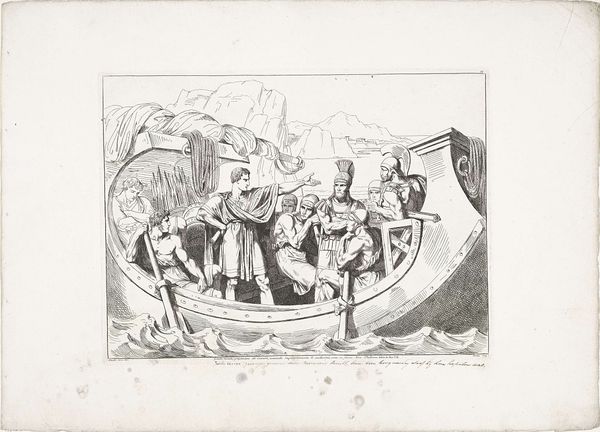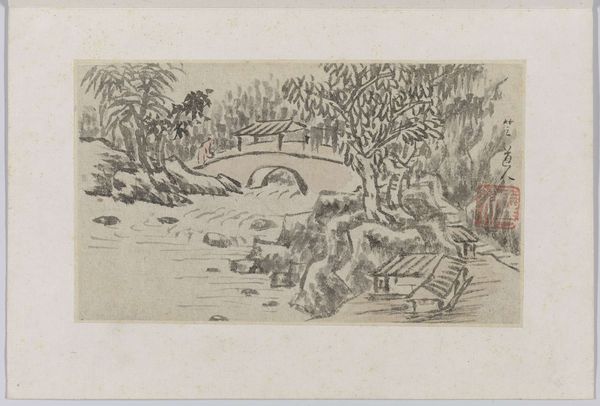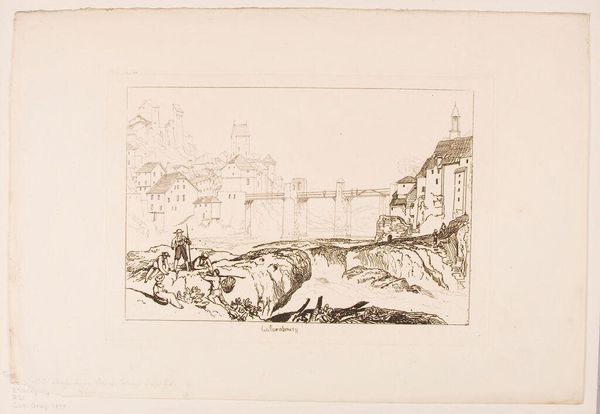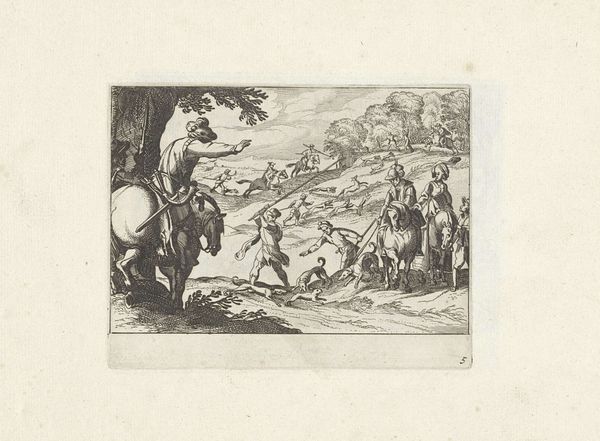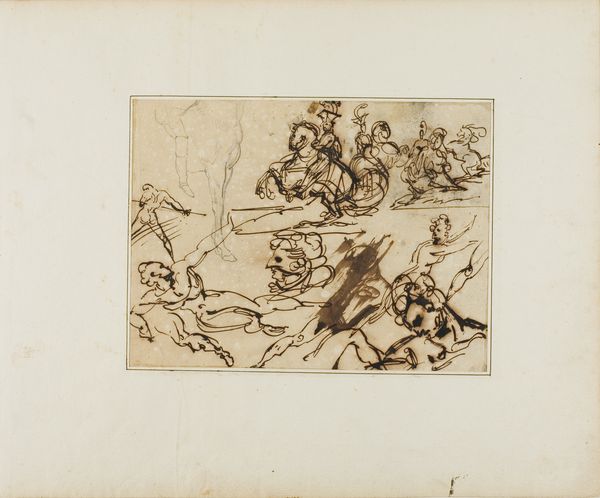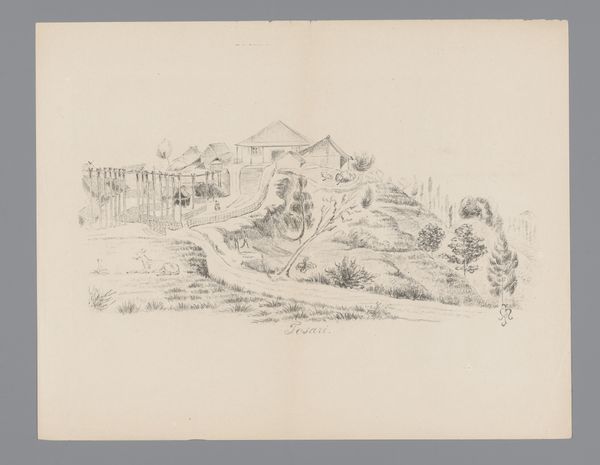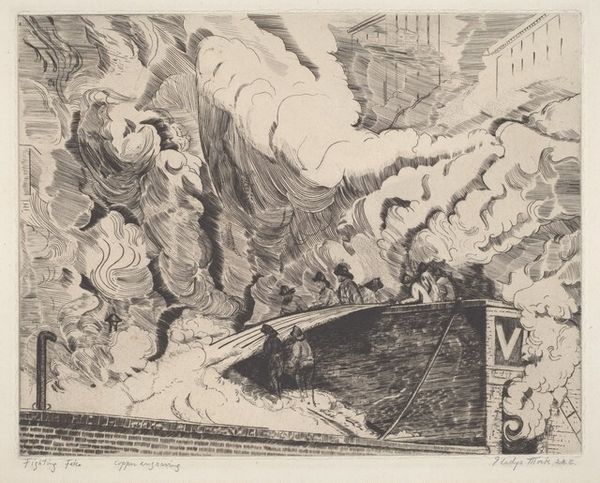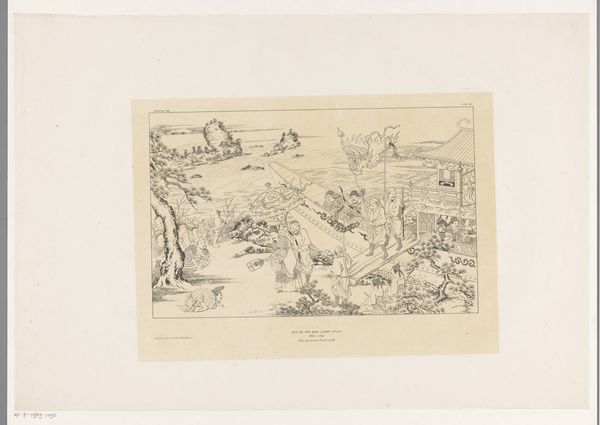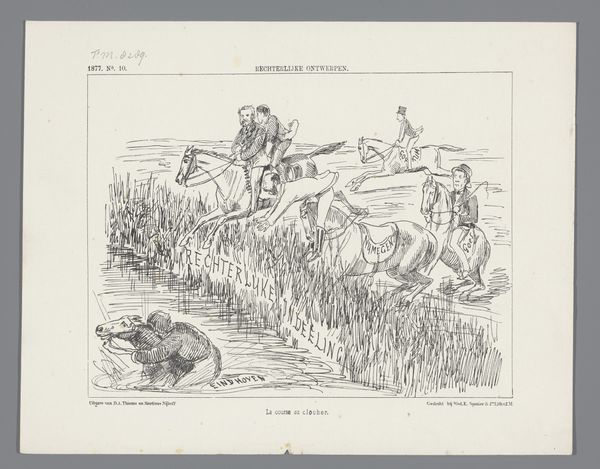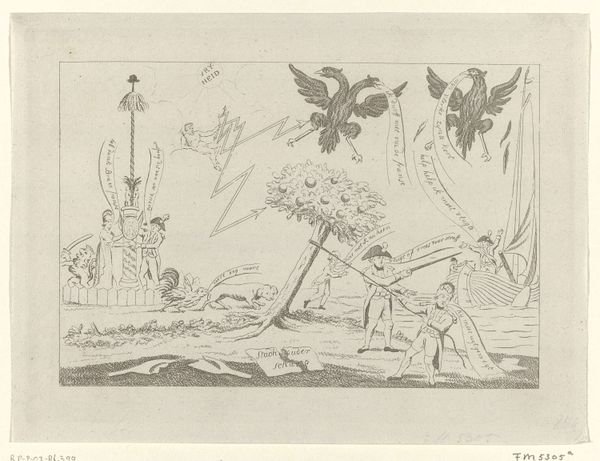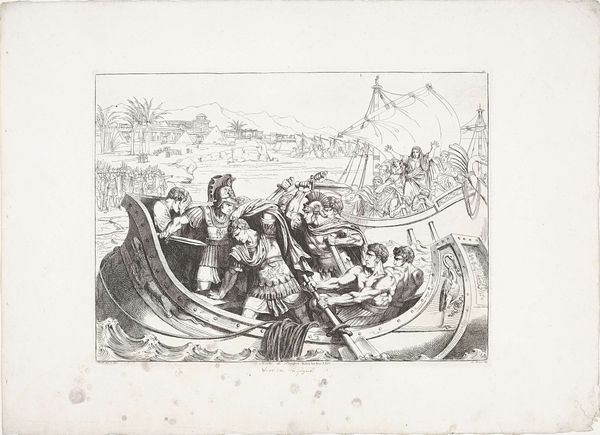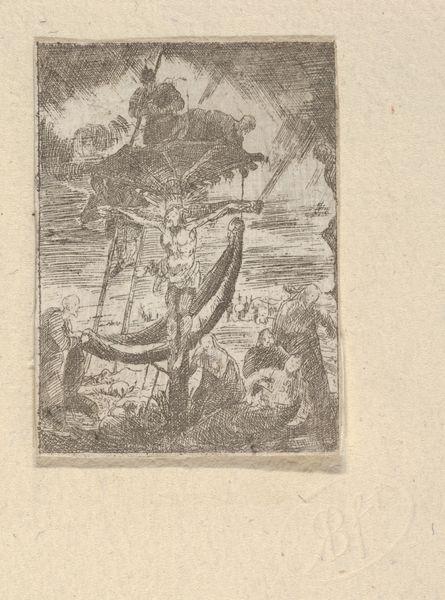
drawing, print, ink, pen, engraving
#
drawing
#
ink drawing
#
narrative-art
#
pen drawing
# print
#
pen illustration
#
pen sketch
#
ink
#
romanticism
#
pen
#
cityscape
#
history-painting
#
engraving
Dimensions: height 315 mm, width 423 mm
Copyright: Rijks Museum: Open Domain
Curator: I'd like to draw our attention to this print titled "Julius Caesar zwemt met tekstrollen," created in 1819 by Bartolomeo Pinelli. It depicts a rather precarious situation. Editor: My first impression is chaos! The image feels like a scene pulled from a tumultuous dream, full of struggle. The composition seems deliberately unbalanced, almost teetering. Curator: Yes, Pinelli captures a pivotal moment using ink with delicate lines and complex textures. The materiality of the engraving really enhances this historical narrative, imbuing it with dynamism. Editor: Indeed, the text scrolls, which would symbolize knowledge, are rendered utterly useless in the water; knowledge abandoned in the face of chaos. The man in the water – is he meant to be Caesar? He looks quite distressed despite clinging to those scrolls. It almost represents the limitations of wisdom. Curator: Quite astute. Observe how the artist employs line weight and density to guide the eye, starting with the central figure swimming against a scene of utter destruction; the ships sinking, figures flailing, as though historical might itself is submerged by something greater than itself. The formal organization cleverly enhances the underlying narrative tension. Editor: And look at the background, a meticulously rendered city watches the destruction unfold, completely aloof to the mayhem; a fascinating metaphor for historical continuity despite individual turmoil. We know the civilization existed regardless of what happened to individual ships and Romans. Curator: An excellent reading, placing Caesar within a wider view of civilization’s advancement and inevitable decline; it really challenges our assumptions. It makes me wonder, too, about the intended function of the artwork: perhaps it was originally meant for propaganda purposes but has grown to embody timeless lessons. Editor: I agree; seeing how visual culture creates lasting meanings even far from original meanings, this piece speaks not just to 19th century or to classical Rome but, even today, warns of what becomes lost in calamitous times. Curator: A profound point. I've reconsidered how the balanced visual forces in this work ultimately reflect a complex dialectic rather than sheer conflict. Editor: Precisely. I now see it less as a scene of isolated chaos and more like a reflection on enduring culture, surviving any given turmoil.
Comments
No comments
Be the first to comment and join the conversation on the ultimate creative platform.
